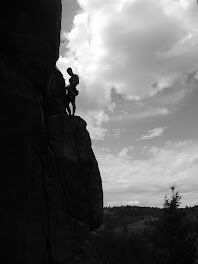Peter Bradwell identified the term edgeless university. It seems that something comes up daily that moves us closer towards identifying further trends towards what Bradwell defined as the “Edgeless University.”
What is the Edgeless University? It is identified as follows:
“that the function they perform is no longer contained within the campus, nor within the physically defined space of a particular institution, nor, sometimes, even in higher education institutions at all.”
Bradwell, the author of “The Edgeless University,” for DEMOS identified the following trends that will, , impact education these include, I also added one or two to the list:
1. Open repositories of online content
2. Social Media Networks like Facebook, Twitter
a. Increased collaboration of people who are not geographically co-located
3. Semantic Web tools
4. Use of Virtual Learning
5. The economy
6. Increase in numbers of students
7. Open course ware/open education resources
8. Open and free universities
9. New ways of accrediting learning
10. Open scholarly journals: information is now more searchable
Taken one at a time how have these trends, tools or circumstances moved education closer to the concept of the “Edgeless University?”
1. Open repositories of online content have been around for years with the advent of Merlot.org in 2000. Now you can do a search for open course ware in general or discipline area specifically and find a plethora of resources.
a. Some of these are as follows with their mission or state purpose following:
i. Lecture Fox
1. Lecturefox is a free service. You can find high-quality classes from universities all over the world. We collect without exception lectures from official universities, and we have a special interest in lectures from the faculties physics, chemistry, computer science and mathematics. In the category “faculty mix” you can find miscellaneous lectures from other departments like electrical engineering, biology, psychology, economics, history and philosophy.
ii. Academic Earth
1. Academic Earth is a repository of video lectures from educators at Yale, MIT, Stanford, UCLA. Their mission is, in part; Academic Earth is an organization founded with the goal of giving everyone on earth access to a world class education.
iii. Flatworld knowledge
1. From their website they state: We preserve the best of the old - books by leading experts, rigorously reviewed and developed to the highest standards. Then we flip it all on its head. Our books are free online. We offer convenient, low-cost choices for students – softcovers for under $30, audio books and chapters, self-print options, and more. Our books are open for instructors to modify and make their own (for their own course - not for anybody else's). Our books are the hub of a social learning network where students learn from the book and each other.
2. Social Media, networking tools such as Twitter, Facebook, Myspace
a. Defining their roles in education has been blogged about, research however I believe they have yet to be applied enough by a critical mass in education in order to determine their effectiveness in education.
b. That being said the number of users demonstrates that the use of these sites is gaining ground every day. While this may not necessarily mean that users consistently use the sites but more importantly that they have access to and the skill level to be able to use them in some manner for education or a tool similar to them.
i. A list of the sites and the number of registered users can be found at this Wikipedia site.
3. Semantic Web Tools:
a. Sites such as Twine
b. A full listing of Semantic Web Tools is here at Sweet Tools
4. Use of virtual learning
a. Growth in online
i. Affordability and availability of learning management systems
c. Virtual Worlds for learning
d. Increased informal learning
e. Mobile learning
i. Studywhiz
ii. Brainhoney
iii. Driven because of ubiquity
5. Economy
a. Having a well educated population facilitates the economy of a country/nation
b. Improves quality of life
c. Secures the country’s role on the global stage
d. Improves a nation’s ability to work its way out of a recession
e. Also reduces a university’s ability to work raise funds for capital projects
6. Increase in the number of students
a. Driven by the economy and a demand in increased technical skills we will see people commit to lifelong learning more than ever before.
7. Open Courseware/Open content
a. MIT’s open courseware initiative
b. Open Education Resources : OER content is made free to use or share, and in some cases, to change and share again, made possible through licensing, so that both teachers and learners can share what they know.
8. Open and Free Universities
a. Peer 2 Peer
i. From the website: Peer 2 Peer University (P2PU) is an online community of open study groups for short university-level courses.
i. From the website: University of the People (UoPeople) is the world’s first tuition-free, online academic institution dedicated to the global advancement and democratization of higher education. The high-quality, low-cost and global pedagogical model embraces the worldwide presence of the Internet and dropping technology costs to bring collegiate level studies to even the most remote places on earth. With the support of respected academics, humanitarians and other visionaries, the UoPeople student body represents a new wave in global education.
9. New and acceptable ways of accrediting learning
a. Certifications
b. Assessment
c. Projects/activities
d. ePortoflios/Portfolios
e. Employer certification
10. Open Scholarly journals/research
a. Directory of Open Access Journals
b. Open Access Journals in Education
c. Highwire Press Stanford University
This list is by no means comprehensive, but it does illustrate the bits and pieces of Bardwell’s Edgeless University being in place and coming together. The resources are available for a university to become edgeless, to be global, to be open ..how they harness and organize this is fundamental to future success.


